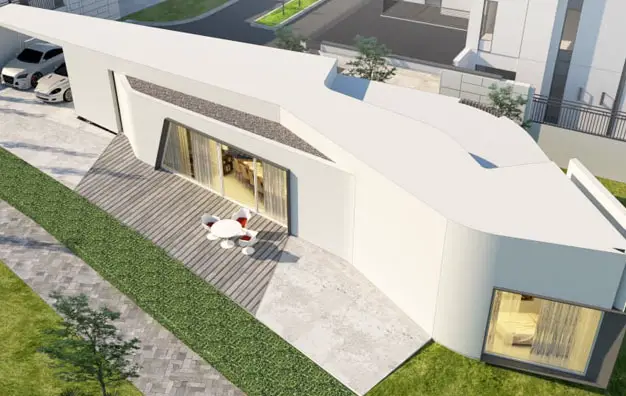Recently Emaar came up with a new announcement of 3D printing a unique house in its Arabian Ranches III property; Dubai architecture got an entire new dimension. Concrete buildings coming up with a 3D print exterior is the latest example of 3D printing evolution that has grown leaps and bounds as a printing technology.
Around the world, there are only 20 such 3D printed buildings and Dubai has already completed an office and a laboratory for drone research, both built as 3D printed buildings, the first of their kinds. Not looking back, the Emirate plans to develop itself as a hub of 3D print construction as it has set a target of using this kind of high standard technology in nearly 25% of all new buildings by 2030.
Dubai market has the right kind of potential to call it big in 3D printing construction
Like 3D printing had created a revolution in plastic industry where it was first used as a As predicted by Smartech Publishing, a leading forecaster of market trends, the industry which is still in its nascent stage, can increase its worth to nearly $40 billion in the next 8 years.

COBOD International, a Danish 3D printing company which was the first one to produce a 3D building in Europe back in 2017, has realised its potential in Dubai. Henrik Lund-Nielson, the company’s CEO says, "Dubai is probably the most exciting market”. He also says that there is a clear demand of 3D buildings in Dubai, which is why construction firms can undoubtedly invest heavily in this novel technique.
Sharing his experience of working with the Dubai government, Lund Neilson said that enthusiastic approach in this Emirate would act as an accelerator in developing 3D technology as a cost cutting technology. In countries like USA AND Europe, where labour costs are high, 3D printing in construction can prove quite economical.
Similar to COBOD, many other start ups have been created by world renowned construction companies and all of them consider Dubai to be one of the leading destinations, thanks to its billion dollar potential.
Using concrete instead of plastic is a new dimension, but 3D principles being used are the same. It is just being done on a larger note. In the basic process, concrete is pumped through a nozzle attached to a conveyor, belt or robotic arm. The concrete is squeezed out in the form of strips to construct layers of the structure or to make various components of a structure. When compared to the traditional method, this technique has been advocated to be cheaper, faster as well as more sustainable.
Dubai as the new hub for 3D printing
Concreative, a Dubai based startup, created by Vinci Construction, has recently launched its very own 3D printing setup in Dubai. Its Operations Manager, Vincent Maillet, sees Dubai as the future hub of 3D printing. The first company to establish itself at an industrial scale in this sector in the Emirate, plans to produce basic elemental components like columns, pillars, stairs, walls, panels and beams. They will then build larger structures by assembling these elements.
Buildings created with 3D printing are actually more sustainable, and cost effective, says Helene Lombois Burger, who is the project manager R&D at LafargeHolcim, the Swiss cement giant. These buildings are easier to replicate too.
She says, “We may have come to the end of step by step evolution. It could be time for a revolution”. With better printers which are more portable and advanced, we move forward towards more customised construction which is cheaper too.
But, let us understand how cautious we might have to be. Lund-Neilson warns that the industry is still in its nascent stages. “We are a baby that had just learnt to crawl”. ‘The potential is still huge and great and everything and we haven't learnt to master it yet”.
“We are not fully ready to work head on with the construction industry”.
3D printing works well where humans cannot go
According to Sergio Cavalaro, who is an infrastructure expert from Loughborough University in England, 3D printing might not appear to be absolutely profitable presently but we are gradually reaching there. It has maximum potential in those areas or situations where traditional human construction is difficult.
So, he suggests we could use 3D printed partitions and shelters in those out of reach areas where there are dangers or toxic conditions prevail, for instance in underground construction.
In future, where there are complex buildings being planned with difficult shapes or strange components, where holes are a complex structure to be constructed traditionally, there 3D printing is the key solution and the client purchasing the building would be definitely ready to shell out an extra cost.
Lund Neilson also agrees that 3D printing has more potential than in plain building printing. If we apply it to simple traditionally built but often ignored structures like pavements, sewage tanks, car parks, benches and oil tanks, it would be much more eye-catching.